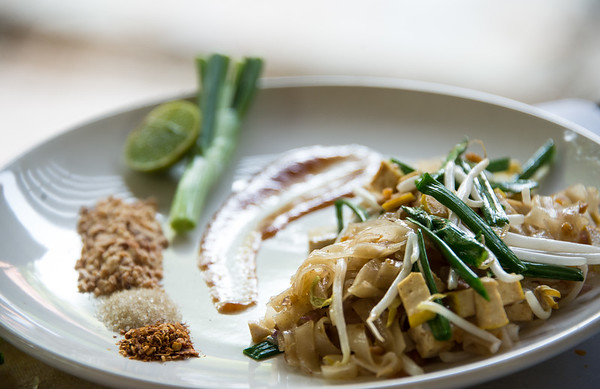
Simple yet elegant pad Thai
Pad Thai was my gateway into Thai cuisine. In my early 20s and unsure of what to order at a new, neighborhood, Southeast Asian restaurant, I opted for a simple noodle dish that promised complex flavors, interesting textures and a touch of the exotic. With hints of piquant tamarind, crunchy peanuts and salty fish sauce pad Thai delivered on its word. After that first satisfying encounter it became my go-to meal when dining or ordering out.
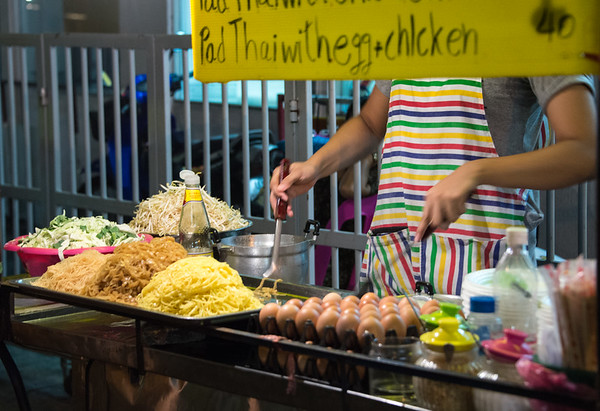
Bangkok street vendor serving made-to-order pad Thai
After 15 years of sampling this specialty on American soil, I wanted it to be the first thing that I ate in Thailand. I’d tried countless Western interpretations of this stir fry. It was time to experience the real deal. This proved surprisingly easy for you can find noodle carts, shops and restaurants serving phàt Thai on almost every street in Bangkok. The same holds true in Northern Thailand.
Popular with locals as well as food-obsessed tourists, this dish has a lot going for it. For starters, it’s inexpensive. Depending on where you buy it in Thailand, you can pay as little as $1 for this filling and wholesome food. Obviously, it’s not difficult to find and, when you do, your repast will be fresh and made-to-order. Whether it’s the abundance of fresh, local ingredients or my overactive imagination, pad Thai does taste markedly brighter and better in Thailand.
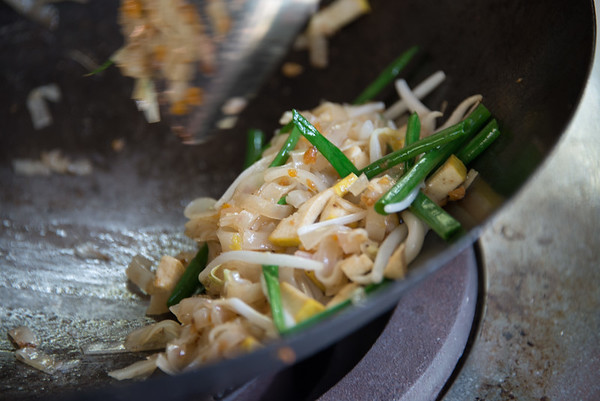
Stir-frying pad Thai
For a dish that packs a tremendous amount of flavor, pad Thai requires few ingredients. Along with the aforementioned tamarind paste, peanuts and fish sauce, it contains rice noodles, bean sprouts, scallions, shallots, preserved turnip and tofu. Occasionally, cooks will scramble a raw egg into the mixture. They may also add dried or fresh shrimp. A few Bangkok street vendors offer chicken, too, but this is less authentic than the inclusion of egg and/or shrimp.
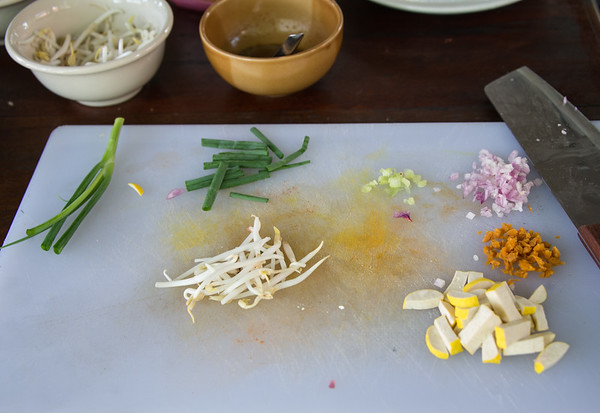
You need just a few ingredients to make pad Thai.
Considering the limited number of ingredients and speed and ease of preparation, I’m surprised that I hadn’t tried making pad Thai at home sooner. After all, I have a wok, rice noodles, tamarind paste, fish sauce, sugar and peanuts. Tofu, scallions, shallots and bean sprouts aren’t tough to track down. Only the preserved sweet radish proved challenging. This I ordered online.
If you leave out the fish sauce, pad Thai is a delightful dish for vegan friends. For those vegans interested in making the following recipe, try this Cook’s Illustrated substitution for fish sauce.
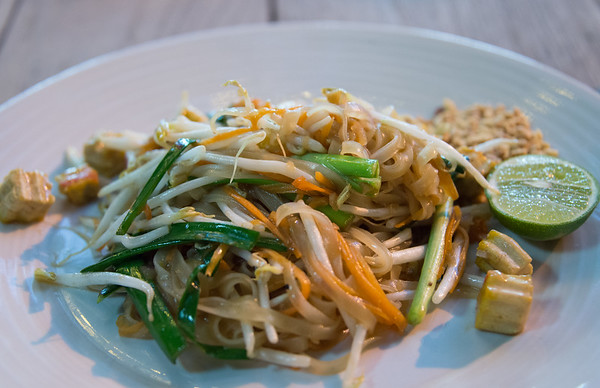
My first pad Thai meal in Thailand
PAD THAI
If you own a wok, use it to stir fry the ingredients. Otherwise, a heavy, well-oiled sauté or frying pan will work.
Serves 2
2 teaspoons grapeseed or canola oil
1 tablespoon tamarind paste
1 tablespoon water
1 1/2 tablespoons fish sauce or vegan “fish sauce”
2 teaspoons granulated sugar
1 large shallot, diced
2 teaspoons preserved sweet radish, rinsed and minced
4 to 5 ounces firm tofu, diced
Generous handful of rice noodles, soaked in warm water for 5 minutes to soften
2 spring onions, whites sliced and greens cut into 2-inch long matchsticks
Handful of bean sprouts
2 tablespoons roasted peanuts, chopped
1 teaspoon chili powder
2 lime wedges
Heat the oil on medium-high until almost smoking. As the oil is heating, whisk together the tamarind paste, water, fish sauce and sugar in a small saucepan over medium heat until the sugar has dissolved, 1 to 2 minutes. Remove the saucepan from the heat and set aside.
Add the shallot to the wok and stir fry for 1 minute before adding the preserved turnip and tofu. Stir fry for 30 to 60 seconds before adding the rice noodles and a smidgen of water. You want the noodles to be soft but not soggy. Stir fry for 1 minute and then add the tamarind fish sauce.
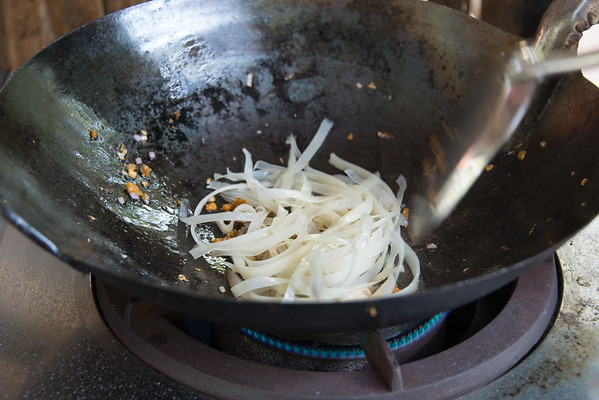
Stir-frying noodles for pad Thai
Simmer the ingredients for another 1 to 2 minutes before adding the spring onions and most of the bean sprouts. Cook for 30 seconds or until the sprouts and onions look slightly wilted. Remove the pan from the heat.
Place equal amounts of chopped peanuts and chili powder on two plates. Divide the pad Thai evenly between the plates and sprinkle the remaining bean sprouts over each. Place a lime wedge next to the pad Thai and serve hot.
6 Comments